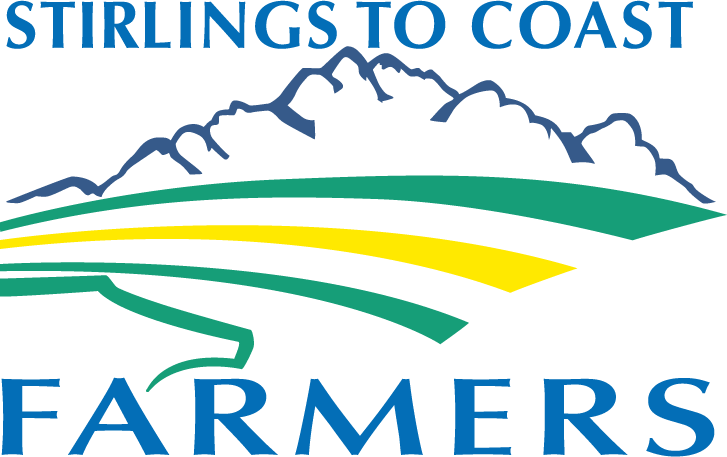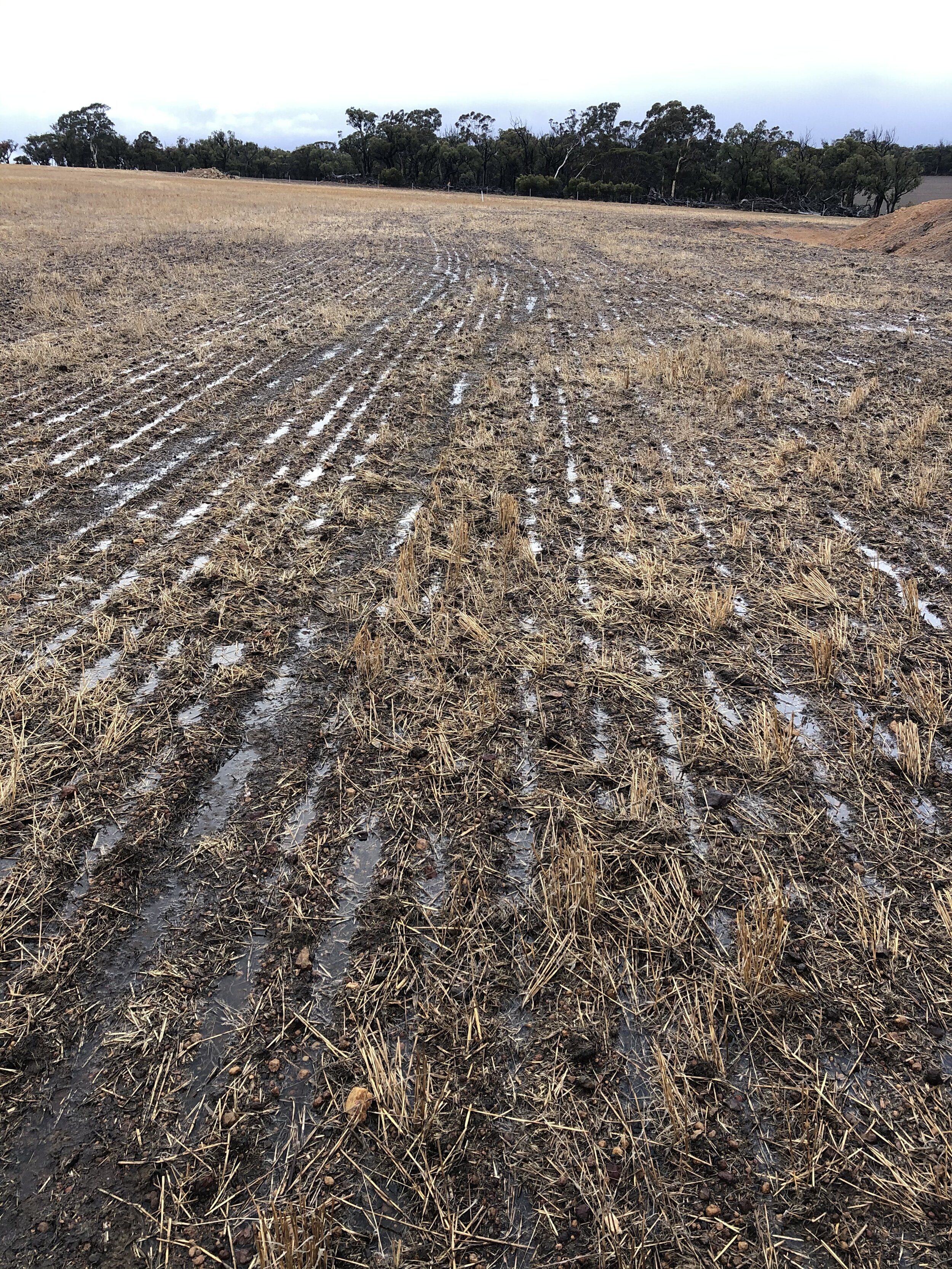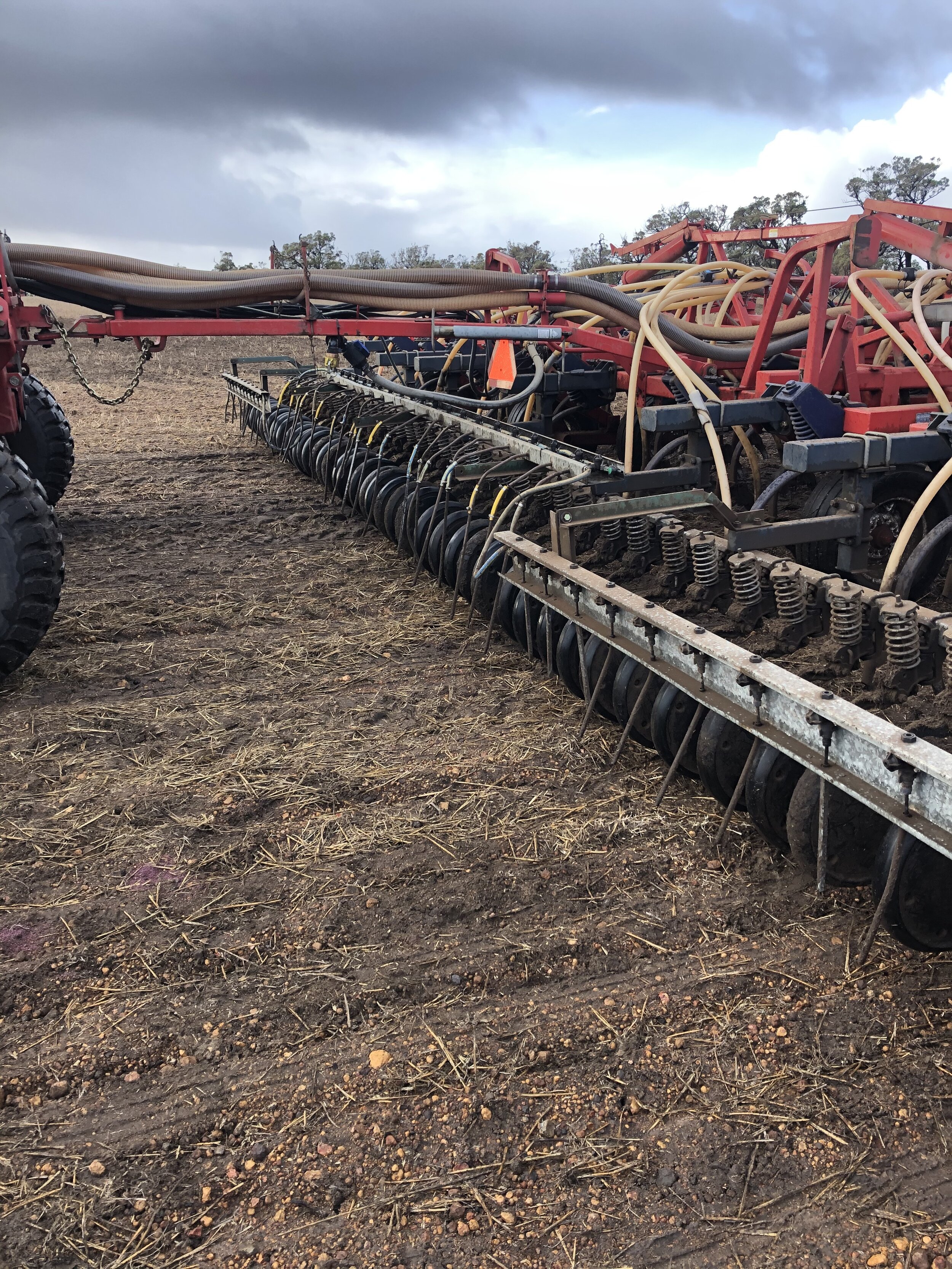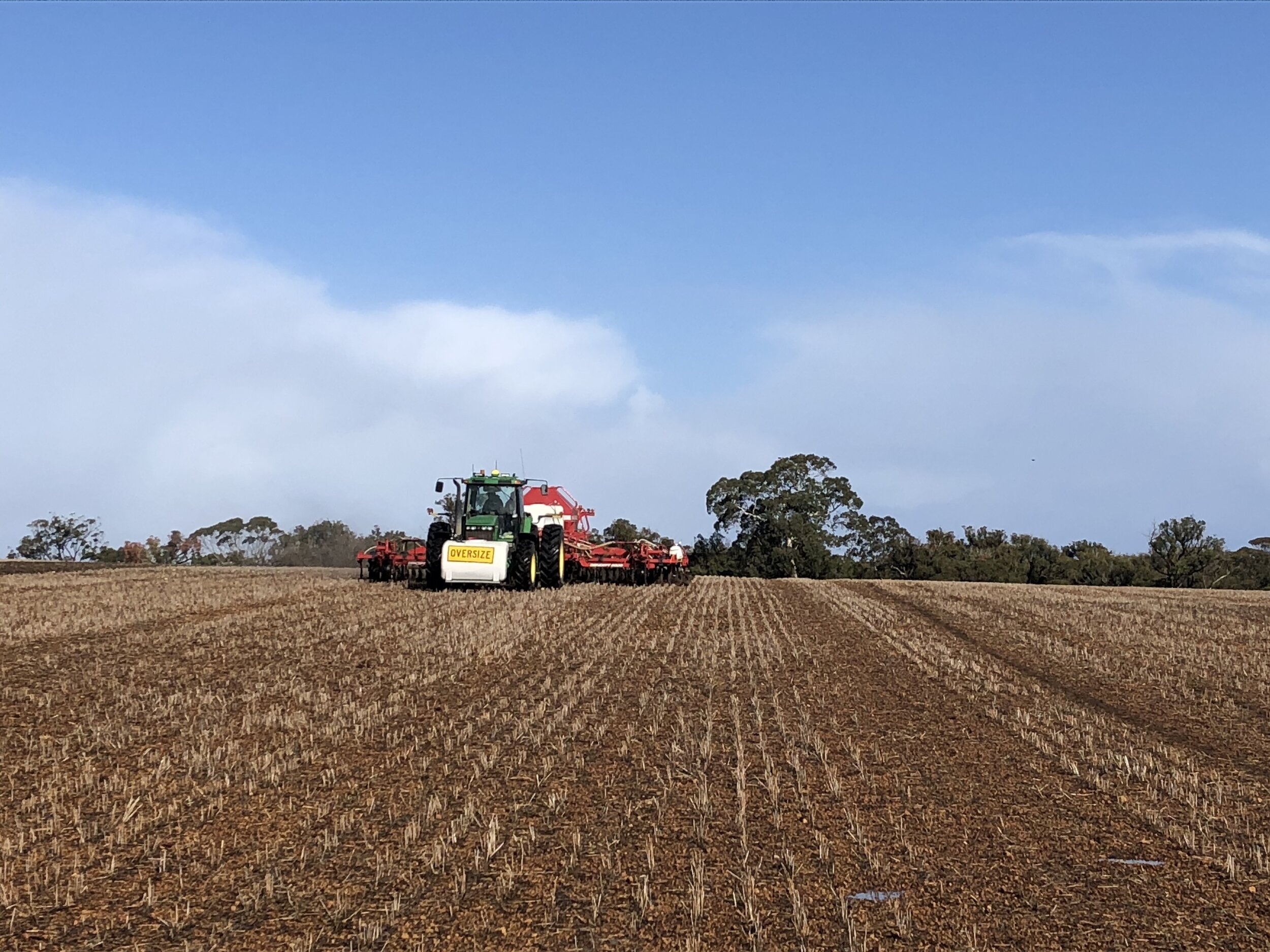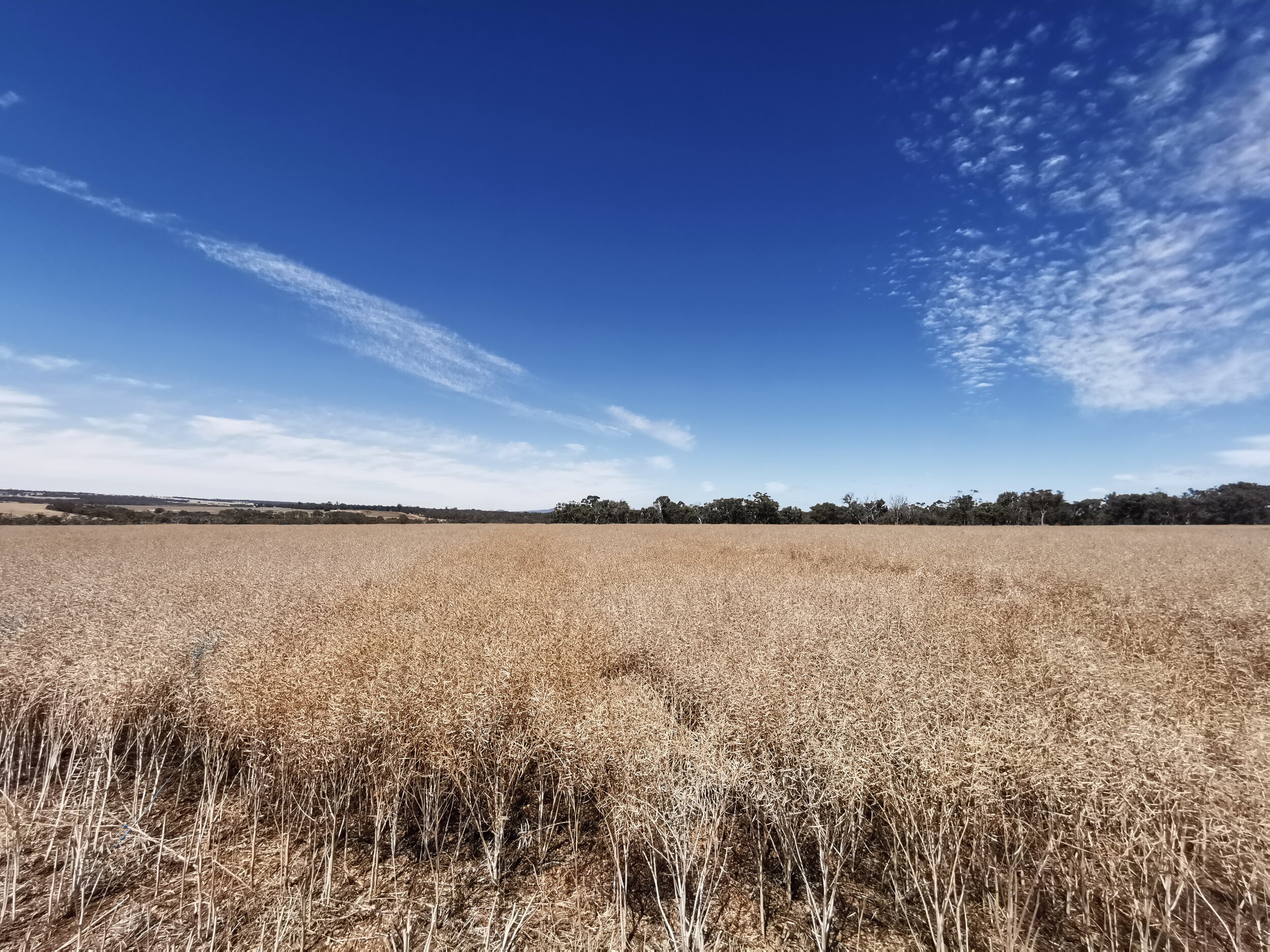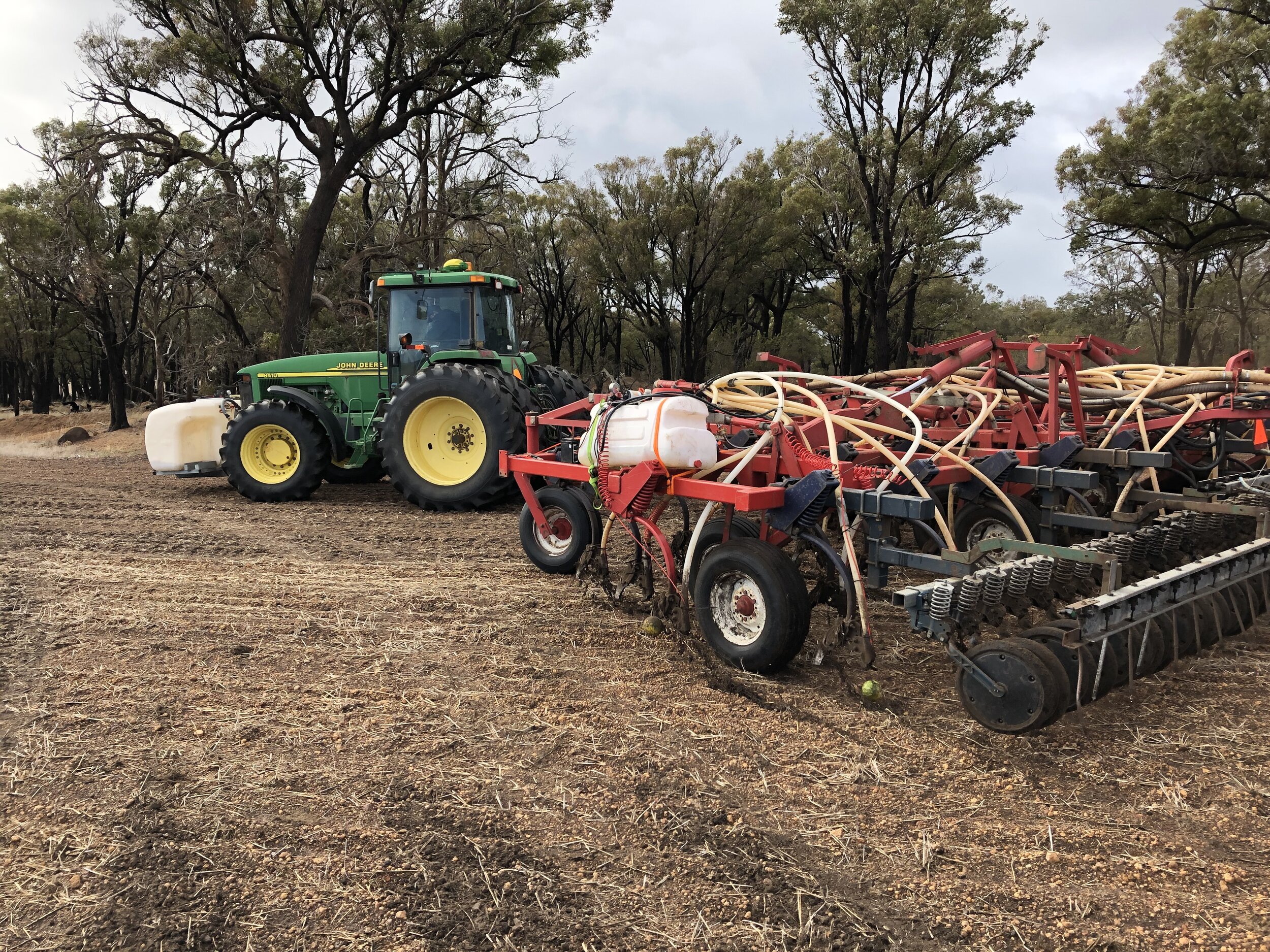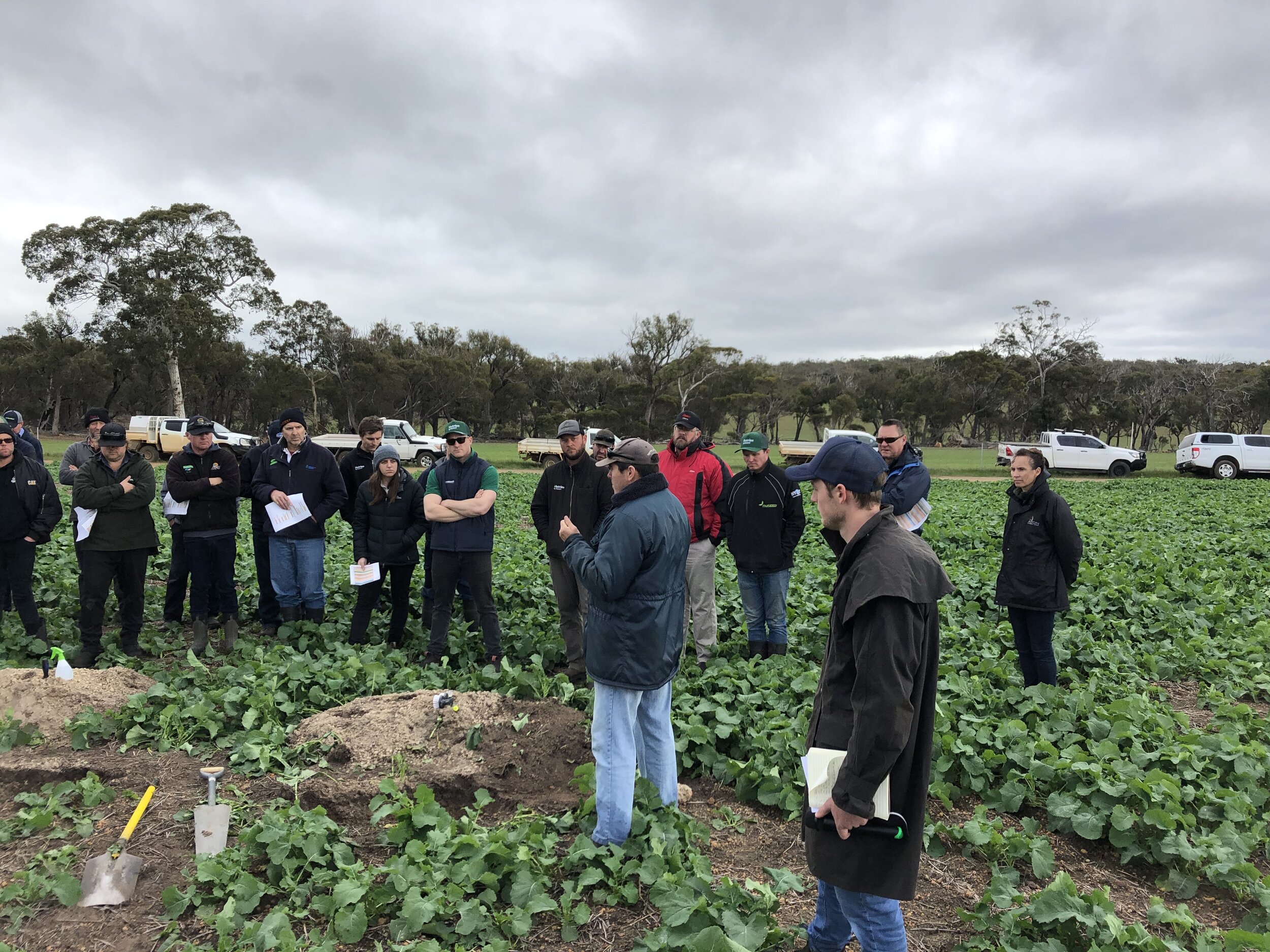Non-Wetting
Management
Key Messages
Placement of soil wetter in the seed contact zone behind the seed boot was most effective for improving germination and early biomass growth.
Seeding on or near last year’s furrow significantly increased early biomass growth compared to off row.
Canola plants can compensate for low plant densities with increased branching and pod formation and so do not often show a significant response to improved germination from soil wetter application.
There is high variability in expression of water repellence across paddocks and soil types along with response to soil wetter.
Summary
Recent low summer rainfall and dry growing season starts have led to a growing non-wetting soil issue for crop germination. The use of soil wetters as a mitigation method offers the chance to alleviate the issue in years of concern. Through the investigation of 11 different placements and rates in a forest gravel soil, it was found the best placement of SE14 soil wetter is in the seed contact zone with significant improvement over the control in plant germination and early biomass. Increasing rates from 2 L/ha to 4 L/ha for each placement resulted in small improvements that were not significantly different. There was a significant improvement in early biomass when seed placement was on or near last year’s furrow when compared to off row. There were no benefits seen in yields with canola plants compensating for low plant density with increased branching and pod formation. However, there were some significant decreases either due to spatial variation or treatment differences in demand and access to nutrients in drying soils over crucial yield determining periods.
Background
Over the past few years, grain growers in the Albany port zone have found it more challenging to achieve an even crop germination because early growing season conditions are drier and more volatile. Non-wetting expression is particularly problematic for growers with forest gravels, which usually rely on late summer and early autumn rains to alleviate the soil's non-wetting properties for plant germination. Growers and advisers are looking at cheaper mitigation options rather than costly soil amelioration to alleviate non-wetting soils effectively.
Conventional methods of managing non-wetting involve mechanical disturbance of the soil structure to mix the non-wetting particles with wettable particles. Mechanical disturbance includes claying, deep ripping with inclusion plates, ploughing and spading. These are expensive to implement for the farmer; however, they also have long-lasting results. They also carry a significant economic risk due to the cost and environmental risk from soil eroding winds.
Mitigation management options that are being more closely looked at recently include wetting agents, on-row seeding, furrow seeding and stubble retention. There are a range of wetting agents now available on the market for farmers to use and a range of placements they can achieve whether it be on the seed, down below the seed, in the seed contact zone or on the furrow surface. Previous research by Glenn McDonald (DPIRD) found that wetting agents will help crop germination and water infiltration at the end of the season, which assists in grain filling. He also noted a long-term effect of using soil wetters in paddocks that farmers have also anecdotally supported with their experiences.
resources
Newsletter Articles
Videos
ACKNOWLEDGEMENT
SCF would like to thank the GRDC for investing in this project and Southern Dirt for inviting SCF to partner with them.
